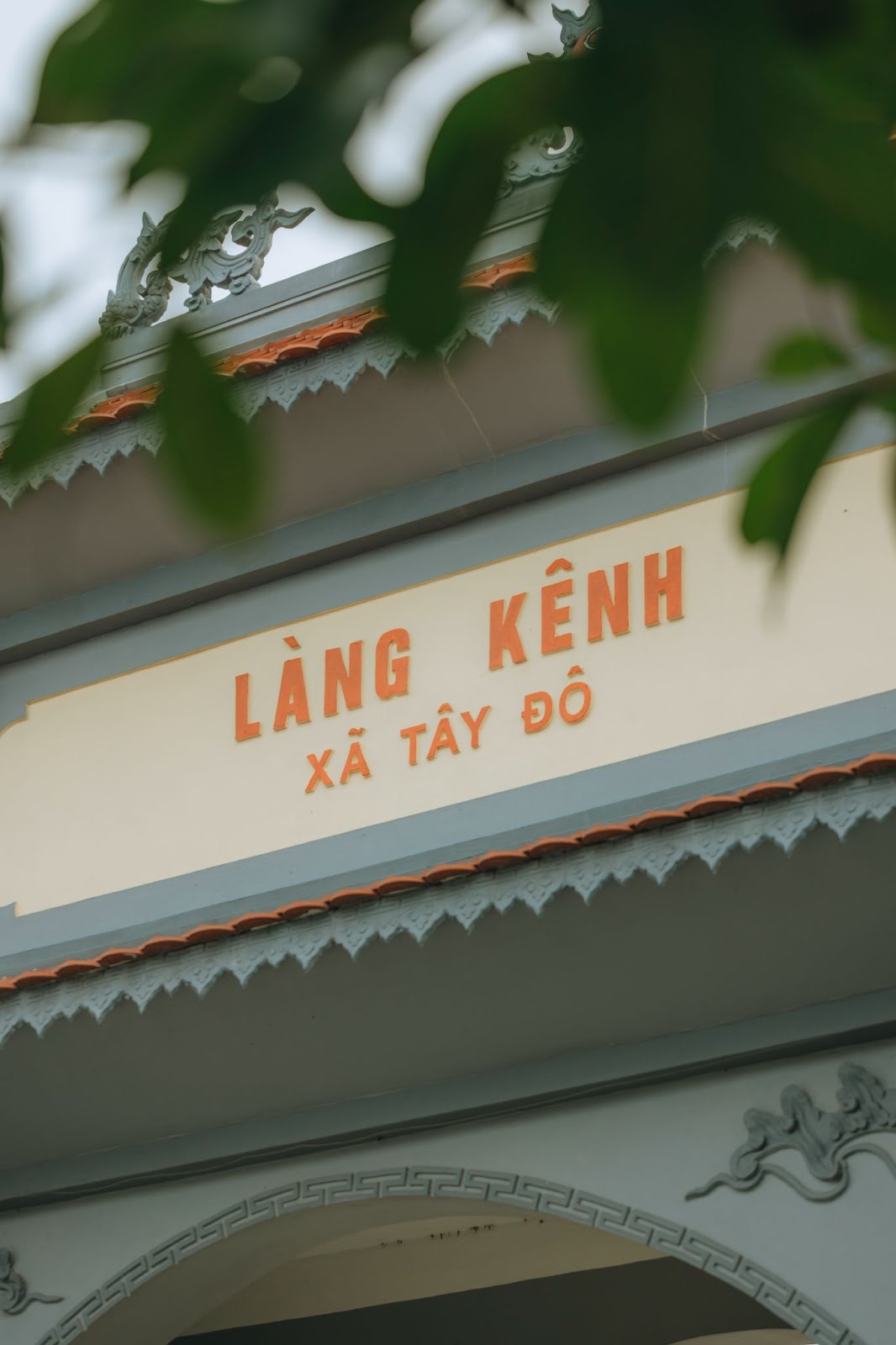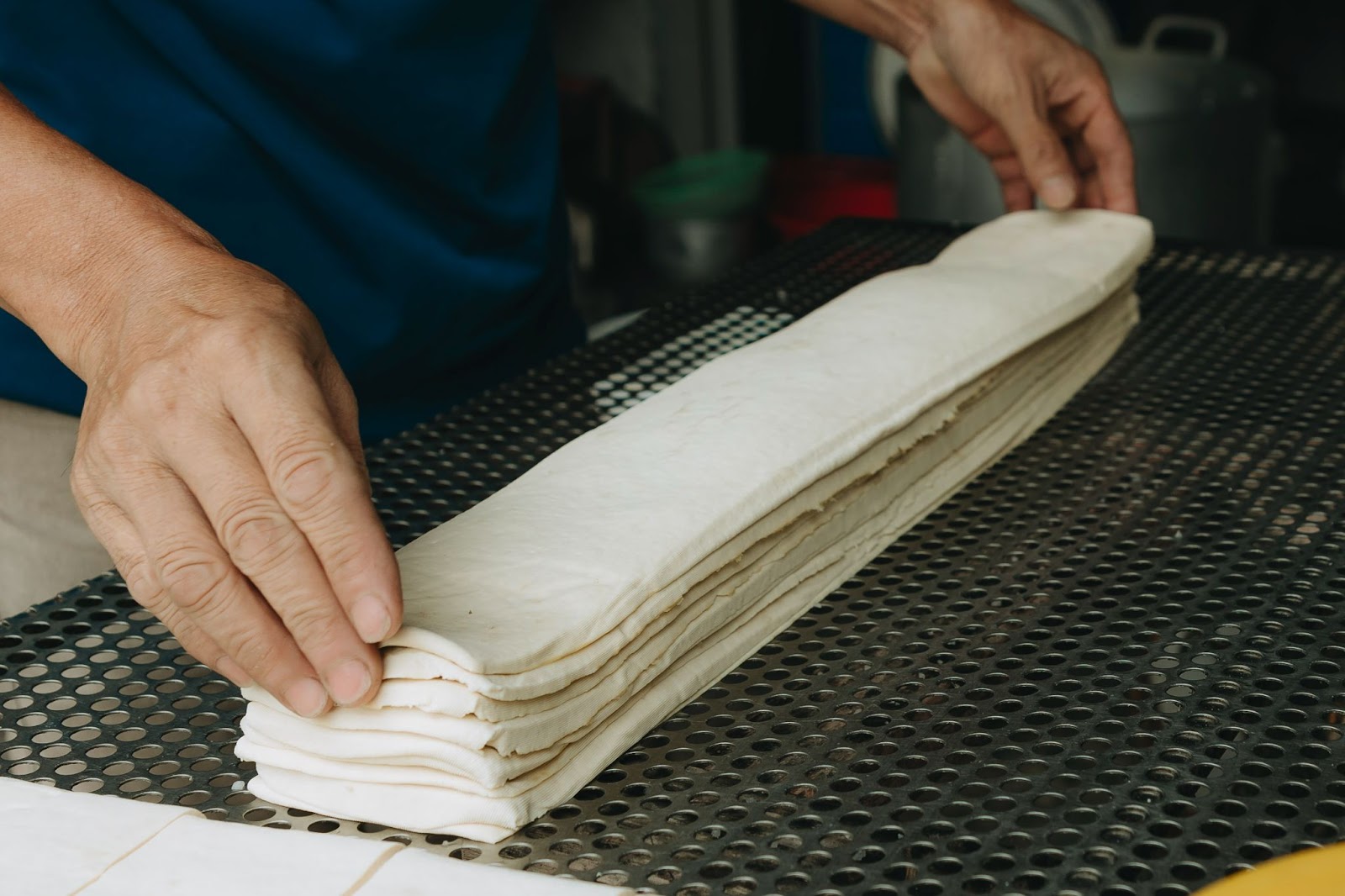If Lang Mo tofu is famous everywhere and is mentioned as one of the quintessence of Hanoi cuisine, the reputation of Lang Kenh tofu is smaller and narrower. Many people were born and raised in Thai Binh but have never heard of this unique, rustic dish.
Kenh Village is located in Tay Do Commune, Hung Ha District, Thai Binh Province. The small and poor village is located in the rice granary, surrounded by vast, immense fields. In the early days of August, looking down from above, Kenh Village seems to be nestled in a giant green silk strip. There are diligent workers making tofu every day.

No one knows exactly when Kenh village tofu was made. We only know that it is a traditional craft passed down from father to son and has been around for a long time. The old craftsmen in the village are the third generation doing this job. They talk about the job with great pride: “This is the job our ancestors passed down to us.”
Every day, around 1 to 2 am, when the sky and earth are still dark and everything is asleep, families who make the craft turn on the lights. They start their day in the dim light. Two to three people share each step, quickly doing their part. The wrinkled, time-worn hands and the crow’s-feet eyes speak volumes about the experience of the tofu makers in Kenh village.
 The tofu maker's time-stained hands. |
Kenh village tofu is different from all the types that we usually eat and see every day. Because Chai village tofu is long and tall, Mo village tofu is square and round, plump, while Kenh village tofu is thin like Korean fish cakes that we often see on TV dramas or videos exploring Korean cuisine. The tofu is rectangular, pure white, about 0.5 cm thick, flexible and can be bent.

When lightly gliding through the fat layer over medium heat, the tofu has a golden color, soft, rich, and fatty inside. If a normal piece of tofu can be transformed into a stuffed tofu dish, then Kenh village tofu can also be made into a similar dish, but it looks more eye-catching and creative. The tofu skin is rolled up with the meat inside, tied with chives or green onions, fried until golden brown, and dipped in sweet and sour fish sauce. The crunchy, moist texture of the tofu and the fragrant minced meat mixed in the rich fish sauce, sour, spicy, salty, and sweet, make the eater exclaim when enjoying it.
According to Mr. Khai and Mrs. Che - the owners of Khai Che Tofu, delicious tofu depends on many factors. First of all, the soybeans must be large, plump, and round. They soak them in water, then put them in a blender, and grind them into a liquid powder. From the resulting powder mixture, they use a filter to separate the pulp, get the soybean water, then boil it in an aerator, add sour water to catalyze the bean water to form young beans. The young beans are then scooped into molds and pressed to release water to make the tofu firm. Finally, they transfer the beans from the mold to a clean tray, sprinkle salt on the layers of beans to complete a batch.
Mr. Khai and Mrs. Che are diligently doing their work.
Making tofu is not difficult or complicated, but it requires a lot of steps and is time-consuming. The workers work all day, all year round in the village, like the perennial trees that cling to and guard this land.
In Kenh village, people no longer make tofu much, only a few dozen families remain. The traditional profession in the current context is difficult to survive. There are craft villages with only a few people doing it, some people are struggling to keep the ancient craft intact, some even quit the profession and the craft village is lost completely. The elimination in the market with the rise of science and technology has made many places like Kenh village become unstable and precarious.
Two years ago, there was a period when Mr. and Mrs. Khai Che’s family only produced about 30 to 40 kg of tofu a day because there was no source of consumption. Was that an alarming sign for a craft village? But because there are people who love and cherish the profession like that, today Kenh village tofu still exists and is brought to many provinces. The joy of the workers is multiplied when the market has many positive changes. And people remember Kenh village with a popular dish like the rustic beauty of the people and land of Thai Binh.
Source: https://giadinh.suckhoedoisong.vn/ghe-thai-binh-thuong-thuc-dau-phu-lang-kenh-172240816091145067.htm



































































































Comment (0)